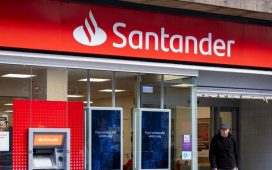It’s a brave chief executive who utters the words “let’s expand overseas”, writes Rosie Carr. On paper, the decision makes sense. A new market means a chance to build your customer base and profits. But this is a quest that often goes wrong.
Electrical goods retailer Currys has been through a difficult patch with its Nordics arm. Sales collapsed so badly that the company pulled its dividend last year, alarming investors. But we shouldn’t judge Currys’ experience by other retailers’ foreign fiascos. Rival AO World, for example, launched into the Netherlands and Germany, while Tesco blew more than £1.5bn on a US venture. Both were forced to beat a retreat as their best-laid plans fell apart.
Tesco studied the US market in great detail and believed it had found a gap. It hadn’t — US consumers did not take to the Tesco approach and what looked like a gap was in fact a dark pit. AO believed it could roll out exactly the same model in Europe and customers would flock to its “better way” of buying white goods.
Currys, which expanded into Scandinavia 25 years ago, chose the acquisition path, buying an established brand, Elkjop. But it has no need to emulate AO or Tesco’s exits because its international business has long been a key and profitable division and is already recovering. Last year’s dip was caused by ordinary factors: the cost of living headwinds and heavy competition from rivals. Indeed, its overseas arm is seen as a draw not a hindrance for potential buyers.
BUY: Currys (CURY)
Both of the company’s remaining geographic segments returned to profit, writes Christopher Akers.
Currys’ shares were knocked down by 5 per cent after it took the “prudent decision” not to reinstate its final dividend. But the omnichannel retailer displayed signs of progress as it returned to statutory profit and said it expected profit and free cash flow growth in the new financial year.
The company last returned capital to shareholders through its interim dividend last year. Management said that as pension contributions and capex are increasing it had decided against a reinstatement at this stage, but would look to resume returns in the next 12 months.
Adjusted pre-tax profits grew by 10 per cent to £118mn in the year, at the mid-point of the increased £115mn-£120mn range guided in an April trading update. On a statutory basis, the company returned to profit after being hit by a £511mn impairment charge last year relating to the 2014 Dixons Carphone merger.
The drop in revenue was as expected, with a 2 per cent like-for-like fall driven by what the company called “weak consumer confidence and depressed demand” hitting electronics and computing sales. The company lost 70 basis points of market share in the UK, but grew share in the Nordics.
Both markets moved from negative to positive operating profits. The adjusted margin rose from 2.2 per cent to 2.4 per cent, and the company is targeting an improvement to 3 per cent.
We recently argued that the company “has been a poor investment in recent years, but its strikingly low valuation presents an opportunity”. That is still the case, with a rating of eight times forward consensus earnings and 0.1 times enterprise value to sales making further takeover interest likely.
BUY: Kitwave (KITW)
The market gave the thumbs down, but results will be weighted to the second half, writes Mark Robinson.
The share price of Kitwave fell on release of half-year figures, which detailed an 8 per cent drop in adjusted operating profit to £10.8mn. Ben Maxted, chief executive of the food and drink wholesaler, revealed that the hospitality customers of the group’s foodservice division “experienced lower footfall due to the sustained period of wet weather in the first four months of calendar year 2024”.
Reduced demand from this corner of the business, along with investment obligations, have combined to trim profitability, a point borne out by the 60 basis point reduction in the operating margin to 3.1 per cent.
The foodservice business has been expanded through deals to acquire WLG (Holdings), a composite family-run drinks wholesaler, and Total Foodservice, a food wholesaler, for an aggregate outlay of £19.4mn. Both businesses are located in the north of England, therefore providing “geographical synergies”. Kitwave will add additional capacity in short order, as the construction of a new foodservice distribution site in the south-west is nearing completion.
Although the group’s labour and delivery-based costs have risen, the related impact of inflation on footfall is difficult to gauge, as a high proportion of the goods the group supplies would fall under the non-discretionary banner. Price pressures are easing and the benefits of recent acquisitions and internal investments mean that results will be weighted to the second half.
According to FactSet data, Kitwave’s enterprise value is equivalent to 6.8 times cash profits, which is towards the lower end of the range for UK wholesalers and distributors, but in keeping with the stock’s growth characteristics. However, given the prospect of increased capacity, coupled with a positive technical signal in the early part of March, we reiterate our buy call.
HOLD: ActiveOps (AOM)
The company is very much of the age, but investors need to acquaint themselves with the underlying tech, writes Mark Robinson.
ActiveOps provides “decision intelligence” software, which takes existing data from relevant sources within a given organisation and produces insights that aid the managerial decision-making process, thus driving “customer and employee satisfaction”.
A successful software as a service (SaaS) model can provide good top-line visibility, and ActiveOps recorded an 11 per cent increase in recurring revenues to £25.1mn in the year to March 31. Recurring SaaS revenues underpinned total revenue growth of 11 per cent at constant currencies.
The company swung to a reported profit in the year, helped along by a two percentage point increase in the gross margin to 84 per cent. Perhaps the most eye-catching metric was the 243 per cent increase in cash profits to £2.4mn.
There is limited broker coverage at this stage of the company’s development. The share price is 34 per cent adrift of the consensus target, while revenues and net earnings are predicted to increase by 10 and 73 per cent, respectively. SaaS companies, if successful, come with high margins and stellar growth prospects. ActiveOps is priced accordingly, with a forward rating of 52 times adjusted earnings. As it is operating in an increasingly crowded marketplace, potential investors need to acquaint themselves with the underlying tech to assess its commercial prospects.










